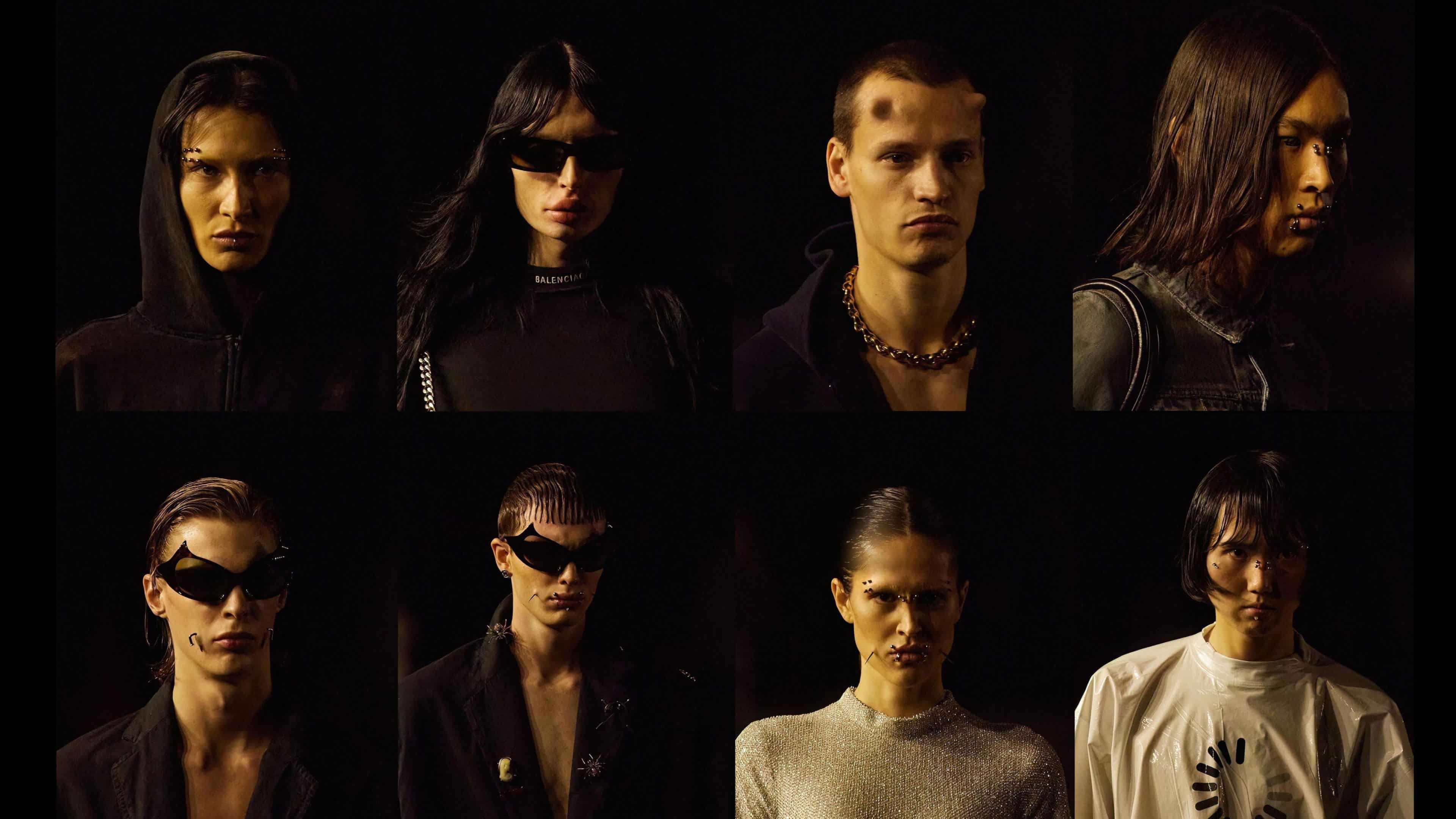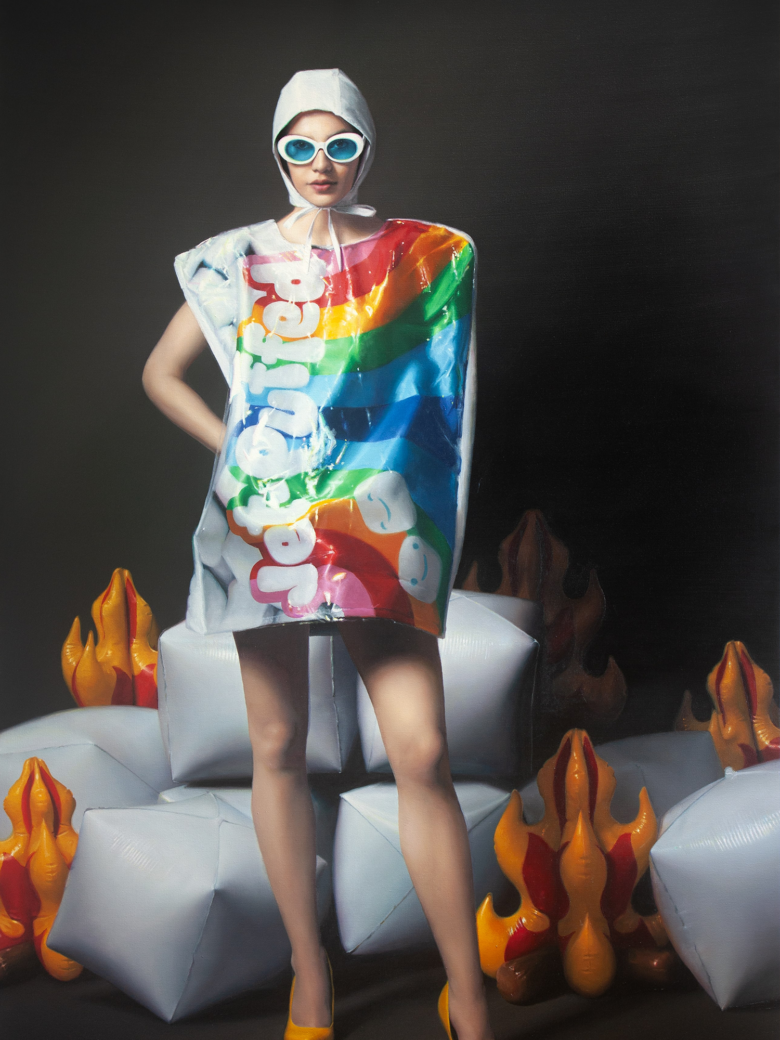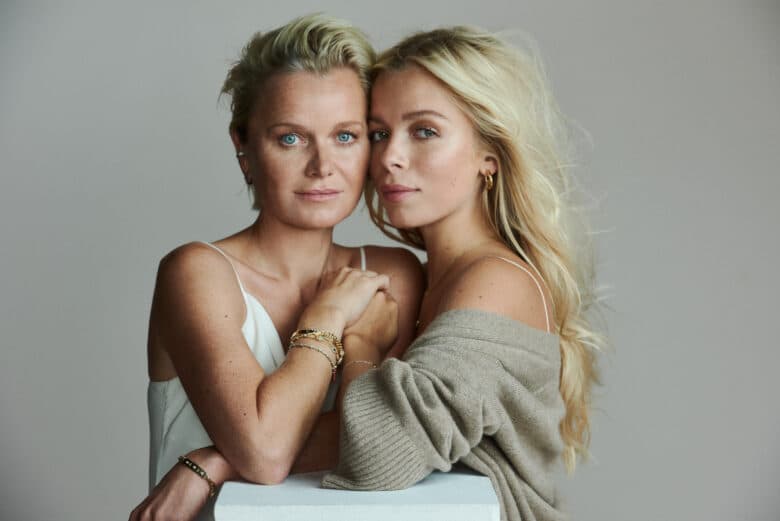Alexis Stone on Balenciaga SS23: “We raided a piercing shop in Paris”

Beyond the Paris périphérie and the Fashion Week go-to’s of the Palais de Tokyo and the 4th Arrondissement, the fashion world descended on Balenciaga’s SS23 show on Sunday. Skimming cautiously around what many have described as a mud pit reminiscent of mass graves and baron apocalyptic worlds, Demna’s latest show for the Spanish powerhouse brought his vision of individual expression together with the work of Spanish artist Santiago Sierra (drawing inspiration from his previous ‘House in Mud’ exhibition).
The message was both clear and expectedly ambiguous. With Demna’s penchant for pinning inspiration behind his shows to topical current affairs and political changes, much like his anti-war statement in Balenciaga’s AW22 show which took place in the newly-cast shadow of the Russian invasion of Ukraine, themes of societal annihilation were lingering within the earthy, rainy miasma emanating around the room. But one thing was certain, via the designer’s show notes, the driving force for SS23 was to “let everyone be anyone” and to “make love not war”. The result? A celebration of individuality brought to life through the clothes of course, but also through the facial adornments created by the renowned “transformer” Alexis Stone.
As part of a colossal team effort, the show’s hair stylist Garry Gill, makeup artist Inge Grognard and Stone, of course, transformed models including Bella Hadid, Amelia Gray, and Kanye West (prior to the wave of backlash following his surprise YZY show and infantile bullying of a respected fashion editor) who splashed through the muddy water of the runway. We saw forehead piercings, spikes shooting through their cheeks and facial modifications that reflected the personalities of the models and the overarching message of celebrating uniqueness and subverting society’s rules of what’s right and wrong. As Stone puts it, the show was about creating a collective of people that celebrated unsung weirdness in certain ways, and championing the diversity of the cast. As you can expect, the production was immense and the creative processes were vast, so Stone – exhausted and on her way to New York – gives us a rundown of everything that went into creating one of the most seismic shows of Paris Fashion Week…
Ry Gavin: Hey, Alexis! Let’s start from the top – it was quite a production for a show, and I’m not even talking about transporting tonnes of mud across Paris, but from your end, just how much of a process was it?
Alexis Stone: This one was a long one. It changed a few times, but I think we were working on it maybe every day for the last month. I made the choice to do every other city as well in between, which I think in hindsight was probably not the best idea. Travelling alone and taking all the prosthetic stuff is just so draining. But we did make up tests every day for the week before. There were some creative changes sporadically over the last few weeks, so it was just like playing cat and mouse.
RG: When you say there were quite a few creative changes, what was the original brief and how did it morph into the end product?
AS: When Demna first asked if I wanted to come on board, it was more of a whimsical idea, we’ll say, with these heavy prosthetic character transformations. Then just as the show evolved, I think everything came to life with the space and seeing the looks and the cast, there was a natural progression and refinement when it came to the makeup looks. We bounced a few ideas back and forth, and as it translated closer to the show date, Demna’s visions refined, which is normal – I very much only come in to bring the creative visions to life.
RG: So did a lot of what you created come from the personalities and stories of the cast?
AS: Absolutely. I think when we look back at our childhoods and growing up, we always had these sort of little segregated groups of people. I remember when I was at school, we would always avoid the certain school bench that had all of the Goths and the Emos, and then we had me who was as teenage kid with severe acne, and I had friends that had such extreme freckles that they felt like they were so unique. We really wanted to create a collective group of people.
RG: One of the messages at the heart of the show was about questioning societal norms and what’s right and wrong. Do you think that it’s through the makeup, piercings and prosthetics that is one of quickest ways of communicating that?
AS: I think if it’s done respectfully and creatively, there is always going to be a conversation regarding transforming models, but we do have to remind people that this is a fashion show and it is a big brand in which we are trying to be delicate and sensitive. A lot of the models that are cast for Balenciaga are incredibly diverse as they are; there were 10 models that already had piercings, we had a few models that had already been enhanced. We are really just paying homage and it is in essence why I come in and do this because I am a transformer and it’s just such an incredibly creative avenue rather than just doing beauty work.
RG: Tell me about the jewellery pieces. Where did they come from?
AS: We actually raided a piercing shop in Paris the day before, mid tests, because Demna decided that he loved the piercings and decided to throw a few more models at me every single day, including Bella [Hadid] and Amelia [Gray]. We bought every single piercing from the shop, which I think was just over 7,000 euros. We bought spikes, we bought nails, we bought every possible millimetre of piercing balls. It was like a factory set up where we had someone taking all the balls off, piercing them through the silicone prosthetics, applying the silicone prosthetics before moving onto the next artist who would apply all of these beads, whilst I was sat there designing these face charts as these models are being passed to us.
RG: How did some of the jewellery work?
AS: We did a few different things in the time limitations we had. We used some silicon skin lumps we would apply on the bridge, the cheek, we had dermal piercings on the cheeks or the foreheads. We would physically pierce or put piercings through those prosthetics and blend those into the skin. But for those that just had the piercing beads like Bella on the eyebrow, we just used an industrial prosthetic glue and stuck those on.
Demna was so specific that he didn’t want to conceal anything. It was the end of fashion month and models’ skins had broken out a little bit, everyone’s a bit tired. I think that was really reminiscent in the final image. There wasn’t loads of concealer, we didn’t conceal any of the pimples, and I think that’s why it works so well and that’s why we can get away with paying homage a little bit closer to home because we are not in sense masking anyone, we’re just enhancing areas and having a little bit of freedom.
RG: For Bella in particular, what was the thought process behind her eyebrow/forehead piercings?
AS: We really just wanted to make sure we had something for Bella. She works a crazy amount of shows, so there were time restraints. I think it was a really stripped back, effortless look for her. That paired with the look she wore, which I believe was just a hoodie, I thought it was almost like an understated statement.
RG: Where do the sprouting body mod horns fit in?
AS: I remember when I went to school, we had a guy that used to put these little silicone symbols, like underneath his skin and they were so cool, and we did play around with concepts like that, which maybe we’ll revisit in the future. It was playing around with body modification further than just piercings. There were a few models that had these really beautiful faux freckles and we really just wanted to enhance everything. Whether it was teenage skin, whether it was freckles, whether it was the idea of being rebellious and having these body modifications in the form of whether it be piercings, tattoos, or these hormones or lip prosthetics.
RG: One final question: Did you have anything to do with the babies?
AS: I wish I did. I asked if I could take one home. Apparently they cost 10,000 each, which is just crazy. They were actually designed for mothers who can’t conceive children and all have sadly lost children in miscarriages and it’s almost a comforter. They were so realistic. One of the bookers was there with their child and every time her real baby walked past, I kept turning around thinking, “they’ve got fucking robots here as well”.

